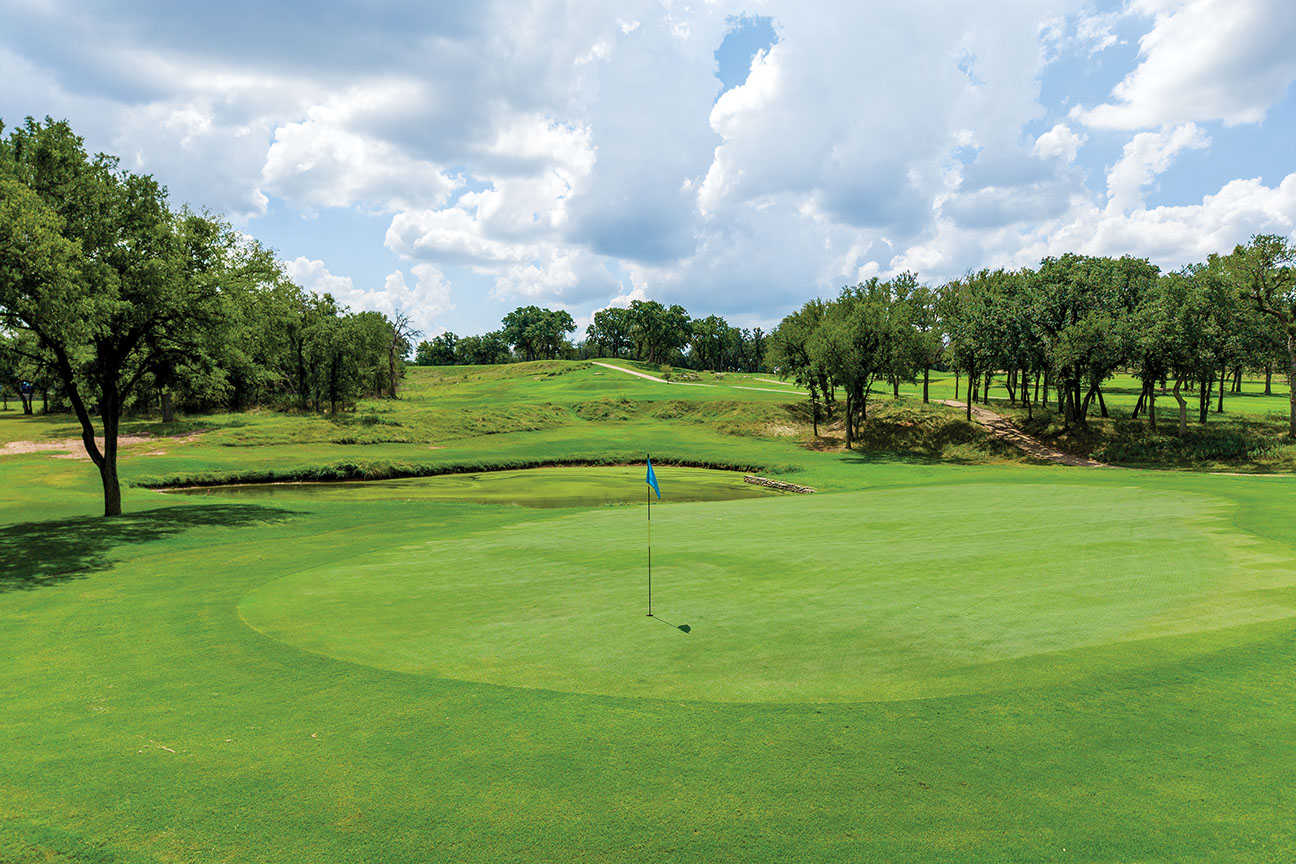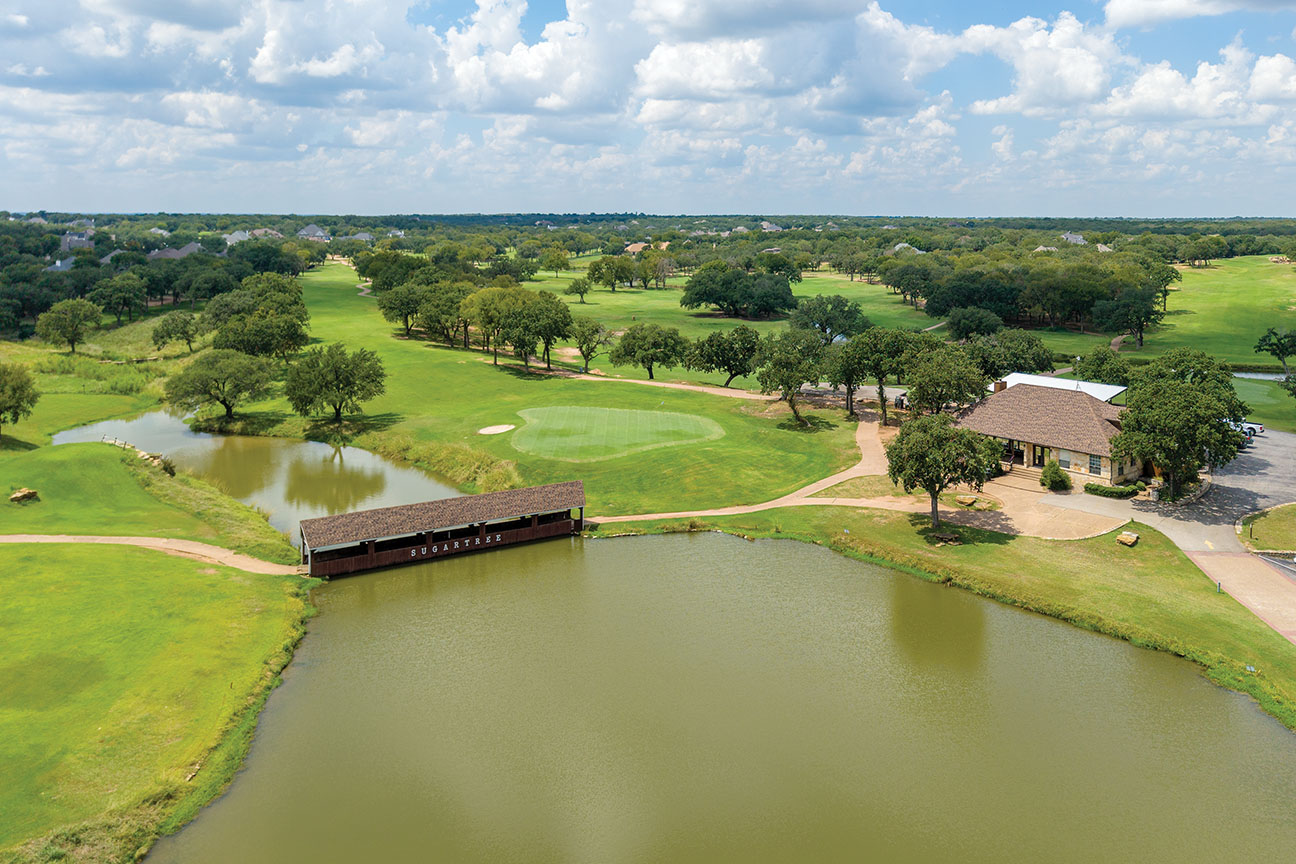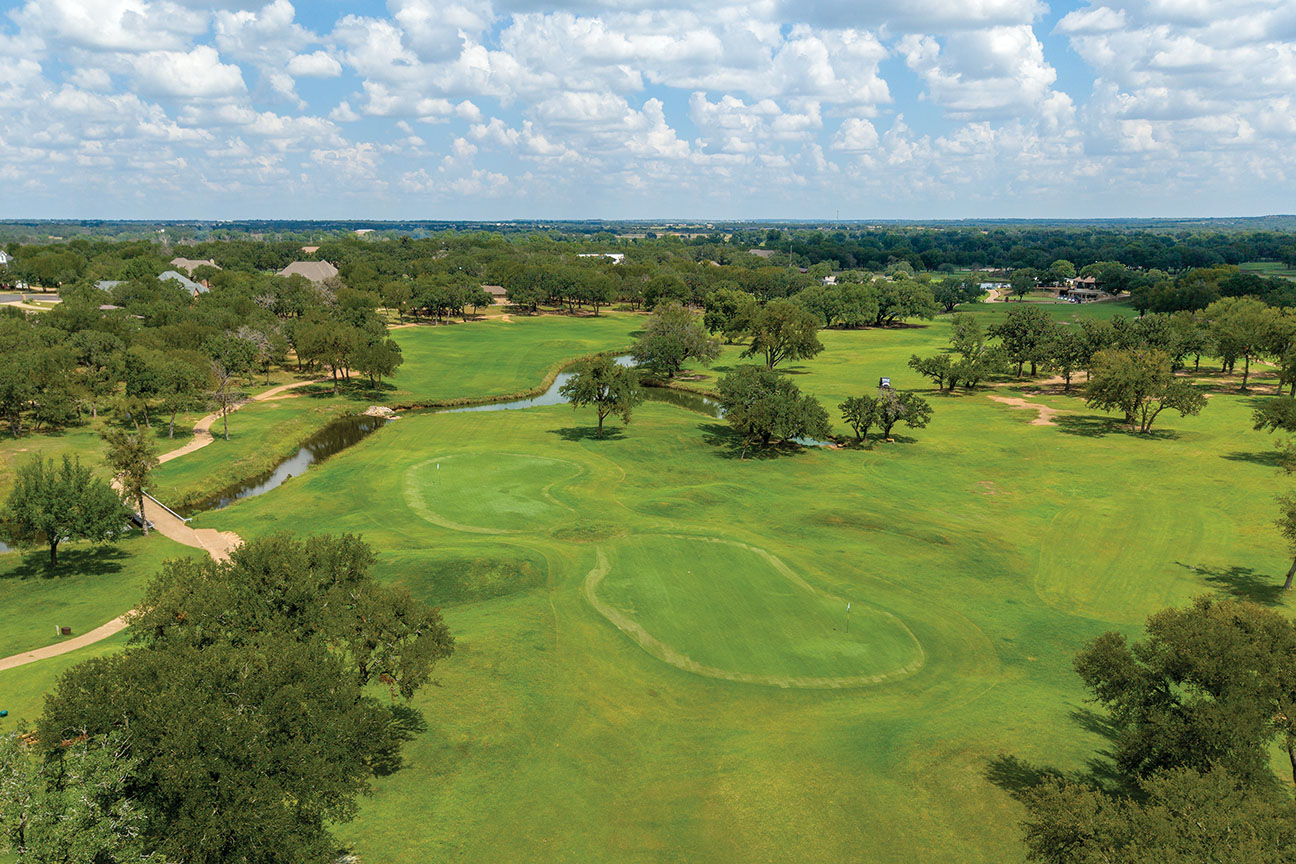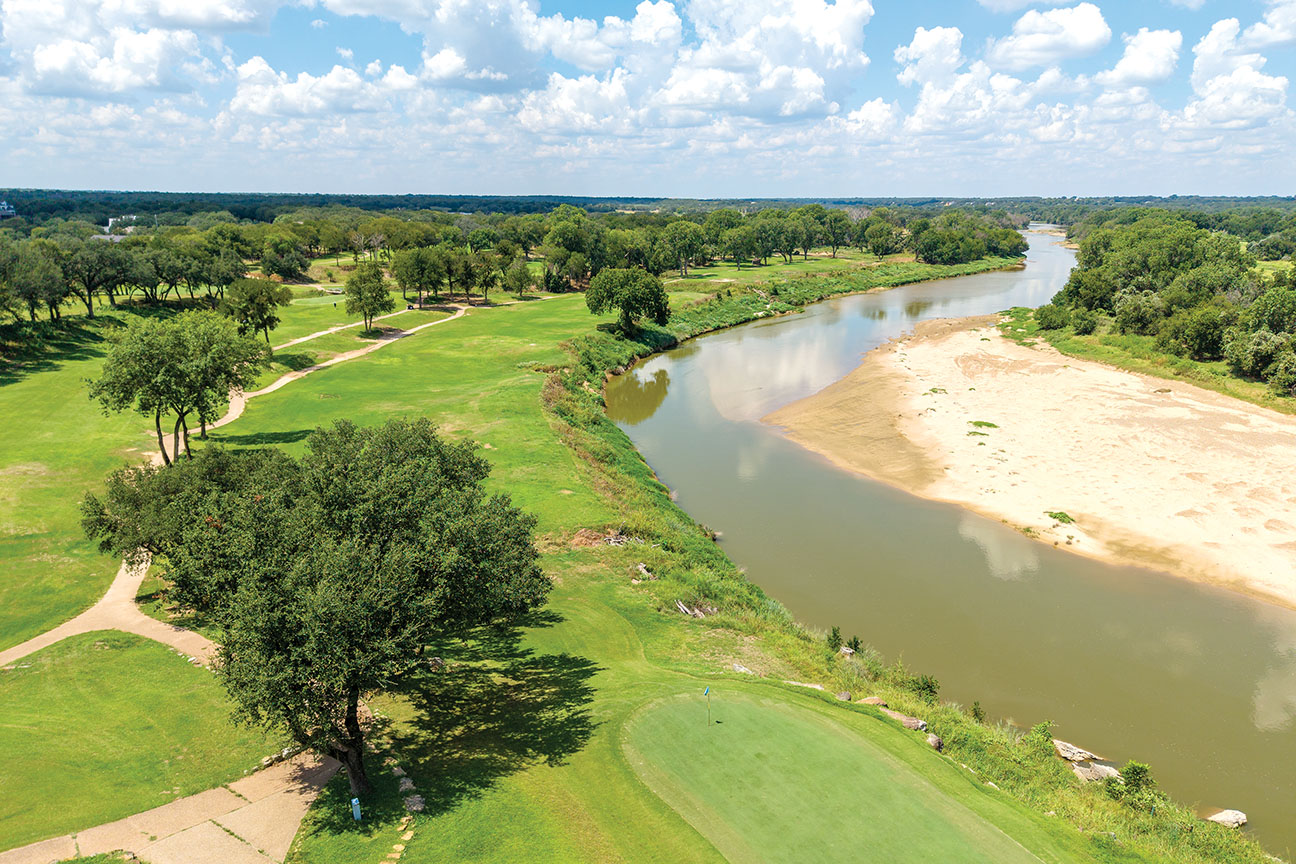Sugar Tree Golf Club has been a fun day getaway course for those on the west side of the Metroplex for years. First opened in 1988, this Phil Lumsden designed, par-72 track offers rolling topography, tree framed fairways and a spectacular view of the Brazos River on the inward nine. Located in Lipan, which is a 50-minute drive from Downtown Fort Worth, Sugar Tree has undergone plenty of evolution over the years, including the addition of a short course five years ago to go along with tree removal and some bunker renovations.

If you have been around the Fort Worth golf scene, you might be familiar with the name J.J. Killeen. Although a native Californian, Killeen made his way to TCU as a member of the Horned Frogs golf team. After his time at TCU, he made his way to the mini tours, including time on the Nationwide Tour, Hooters Tour and Tight Lies Tour. While on the Nationwide, Killeen won a pair of tournaments, including the Utah Championship and the Cox Classic. After a stint in Lubbock as the President and Director of Golf at Red Feather Golf and Social Club, Killeen chose to return to the Metroplex, and Sugar Tree became the vehicle for him to do so. Now, as the owner and General Manager of the property, Killeen’s grand vision for Sugar Tree is taking shape, and that vision includes a re-brand and the addition of some new elements to the experience.
Sugar Tree is hosting the 1st Stage of the PGA Tour’s Q-School October 21-24. Once complete, the club is undergoing a total re-brand, with the course officially becoming Brazos Club. The course will offer memberships for those in the area as they always have, but the course will also remain open for public play. Pin flags and merchandise in the clubhouse already offer the updated branding and logo, and in our opinion, the new logo is great. One featuring a “B” with a spur on the back, and the other subtle outline of a cowboy hat with “Brazos Club” below. The rebrand is perfect for the property’s evolution, especially with growing interest in cowboy culture thanks to Taylor Sheridan’s takeover of Fort Worth and surrounding areas.

As we took a look at the property, Killeen noted the plans for continued tree removal, which will continue to open up vistas across the course, but also help with overall turf management. Also, since our last visit, Sugar Tree has opened their new lodge. This 4,300-square-foot space offers enough space for groups of up to 16 players, or it can be separated in half by a privacy door if your group is smaller. Both sides offer full kitchens, four bedrooms and a pair of bathrooms. There is also an 85-inch smart TV on each side which makes this a perfect retreat for a little morning golf followed by afternoon NCAA football or NFL action. There is even a full-size grill out back should the chef of the group want to fire up some steaks for the group. I will direct you to their website for more information, but I think you will be pleasantly surprised just how affordable it is to book a getaway to Sugar Tree.
The course at Sugar Tree isn’t tremendously long by today’s standards, as it tips at 6,850 yards. From the blue tees, it is just 6,372. Should you take it all the way up to the red tees, it’s just over 5,300. This makes the course manageable for any skill level, although a set of gold/blue combo tees might benefit some of the high single digit handicappers. The layout opens with a 405-yard par 4 that doglegs left and features water left which snakes across the fairway at about 330 from the tips. Although the hole promotes a draw, those who hit a fade can hoist a tee shot over the dogleg and still have room to keep from running through the fairway. This won’t leave more than a wedge or short iron remaining, but be aware of pin placement, as the green is almost 35 yards deep from front to back.

One thing that is a little different about Sugar Tree’s layout is the par of 37 on the front. There are a trio of par 5s and two par 3s. For longer players this offers chances at plenty of birdies when playing well. The third is a great bending par-5 that is tree-lined all down the left and right with towering oaks. A good tee shot allows players to consider going for the green in two, but the average Joe will be looking to lay up and leave a manageable wedge number.
Sugar Tree offers another par 5 at No. 4. The 456-yards on the scorecard tends to play longer as it plays a significant bit up a hill. Good tee shots up the right-center offer the best look at the green, but should you choose to go for the putting surface in two, be aware there is a steep downslope short of the green, so if you do miss short, expect an awkward chip to an elevated surface.
The fifth is another hole that uses the elevation changes on the property to offer a unique perspective from the tee. The blind tee shot is one of the most interesting on the course. It is possible to hit driver, but the fairway narrows at about the 300-yard mark, which can make it tough to hold the fairway. From there, iron shots must be struck crisply from a downhill, hanging lie. The small green can be tough to hit, and when the pin is tucked, be sure you plan for a smart miss.
I’m not exactly sure why, but No. 6 is one of my favorite holes at Sugar Tree. It isn’t long, and it requires a draw (which I can’t hit), but for some reason I really like the look of it. Trees at the corner of this dogleg left really frame the hole nicely, and the slight uphill gives it a true three-dimensional look. Although it can play tough, it is really a nice-looking golf hole and playing only 388 yards, with a good tee shot, players should have a scoring club in hand to a relatively benign green that doesn’t feature any guarding bunkers.
The seventh is one of the prettiest golf holes you’ll find anywhere. At 182-yards from the back tees, this one is a par-3 that plays significantly downhill and can play tricks on you depending on wind direction. There is a water feature short and right, so be mindful of club selection. A shot to the middle of the green and a tidy two-putt is a good way to attack this one.
No. 9 takes players right back to the clubhouse and is the third of those aforementioned par 5s on the outward nine. As with most of the holes on the front at Sugar Tree, hitting the fairway is paramount. Although new ownership continues to thin and remove trees from the property, there are still thousands to deal with that aren’t going anywhere. No. 9 is tight off the tee, and missing left or right will likely result in a layup, or in some cases, a punch out. Water looms right of the green, so a big miss in that direction is a no-no. Sensible players can be conservative here and hit a three metal, followed by a lay-up and a wedge. Sure, it likely won’t be better than a five on the card, but it also won’t be an eight.
The Eatery behind No. 9 green is a great spot to grab snacks mid-round or enjoy one of Sugar Tree’s famous burgers before or after your round. They have an array of sandwiches or even breakfast tacos if you are teeing it up in the morning. If you are done with your round, The Eatery has a peaceful patio that overlooks portions of the course, which is a perfect spot to enjoy a libation before you head out.
The back nine at Sugar Tree is one of the most interesting sets of nine holes anywhere in North Texas. Fun, scenic, and strategic. Everything you would want out of nine holes. Since the front nine is a par 37, the back comes in with just a single par 5 and a total of 35 for the loop.
After a pair of par 4s to open the back, the course really takes on a different persona.
Holes 12 through 15 are three of the best holes on the property. The par-3 12th is a gorgeous hole that plays slightly downhill and over a pond. The pond is adorned with a stone wall that butts up to the green and that wall features a large wooden water wheel that really makes this a great opportunity for a group photo as you prepare to tee off. No. 12 can play anywhere from just 110-yards from the forward tees to a robust 210 from the tips. It’s a great hole and a great test for even the most experienced ball-striker.

No. 13 weaves its way back to the west as you enter the thicker forest just briefly. A tricky par-4 with a fairway that looks like it would be tough to drive a truck down with room on either side. Guess what I’m saying is, the tee shot is a little tight, but the good news is the hole only plays 355, so a hybrid or more controlled iron off the tee is a possibility. It’s a stiff test off the tee, but find the fairway and lower handicaps shouldn’t have any trouble getting away with a par.
No. 14 is one of the prettiest holes in the area. The Brazos River sits off to the left, and depending on how much water it’s holding, can offer a great view of a meandering river, or a partial river with a sandbar visible in the middle. It all depends on what time of year you play and whether they are releasing water from Possum Kingdom Lake upriver. The tee shot at 14 is straightaway, but obviously left is a no-go. Should you miss right, you are safe from the Brazos, but the second shot will almost certainly be a lay-up. Finding the fairway can leave anywhere from 200-250 yards remaining to an elevated green that is very narrow up in the front portion. It’s a spectacular hole that offers beauty, challenge, and visual intimidation in a 524-yard white-knuckle ride.

No. 15 is another prime opportunity to pick up a birdie should you want to be aggressive. Driver isn’t necessary at all, but longer hitters can challenge the front edge of the green with a good tee shot. A shot of 230 from the tee will leave just a little over 100 yards, but bombers can get up close to the green leaving just a pitch-and-putt birdie.
The penultimate hole at Sugar Tree is another great par 3. This uphill, 180-yarder has a narrow neck that players must thread their iron through to hit the putting surface. A pond just in front of the tee box makes you give it a second look, but it’s really not in play unless you chunk your shot. Add a club to be sure you get all the way to the green, as the slight uphill tends to add more yardage than it seems.
As you make your way down the cart path to the final tee box, the property once again provides a one-of a-kind look to players. A small water feature presents itself as you approach the 18th hole, with a group of rocks you must scale via steps to arrive at the elevated tee. The hole crests in the middle of the fairway, which has recently been expanded with some tree removal, and then plays downhill to a crossing creek that can play optical tricks on the player as they prepare to hit their approach. An iron that finds the green can be converted into a final birdie or two-putt par.
Although it won’t be called Sugar Tree much longer, the course continues to evolve with each passing day. A once sequestered property well off the beaten path is now in the crosshairs of the urban sprawl, and while it won’t be knocking on the doorstep for at least a couple more years, the areas around Sugar Tree are growing quickly. The new commitment to excellence from J.J. Killeen, which includes the upcoming rebrand, and continued course evolutions will have Brazos Club climbing the list of places to play in the area. It’s worth the adventure now, and we can’t wait to see where the future takes this great property.